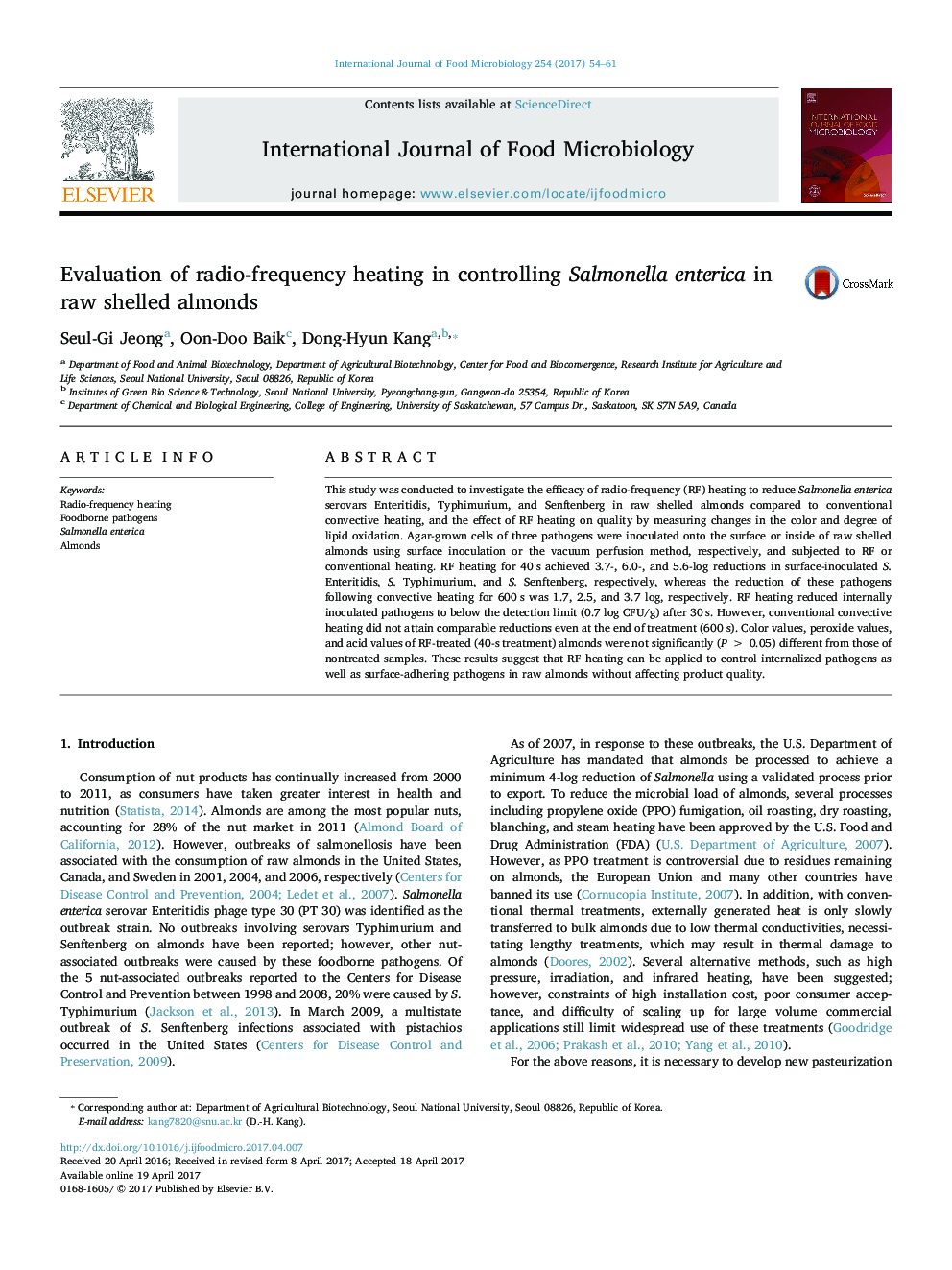| Article ID | Journal | Published Year | Pages | File Type |
|---|---|---|---|---|
| 5740694 | International Journal of Food Microbiology | 2017 | 8 Pages |
â¢RF heating achieved minimum 4-log reduction of Salmonella enterica in almonds.â¢Levels of internalized pathogens were reduced by ca. 5 log CFU/g after RF treatment.â¢Conventional convective heating did not attain comparable pathogen inactivation.
This study was conducted to investigate the efficacy of radio-frequency (RF) heating to reduce Salmonella enterica serovars Enteritidis, Typhimurium, and Senftenberg in raw shelled almonds compared to conventional convective heating, and the effect of RF heating on quality by measuring changes in the color and degree of lipid oxidation. Agar-grown cells of three pathogens were inoculated onto the surface or inside of raw shelled almonds using surface inoculation or the vacuum perfusion method, respectively, and subjected to RF or conventional heating. RF heating for 40 s achieved 3.7-, 6.0-, and 5.6-log reductions in surface-inoculated S. Enteritidis, S. Typhimurium, and S. Senftenberg, respectively, whereas the reduction of these pathogens following convective heating for 600 s was 1.7, 2.5, and 3.7 log, respectively. RF heating reduced internally inoculated pathogens to below the detection limit (0.7 log CFU/g) after 30 s. However, conventional convective heating did not attain comparable reductions even at the end of treatment (600 s). Color values, peroxide values, and acid values of RF-treated (40-s treatment) almonds were not significantly (P > 0.05) different from those of nontreated samples. These results suggest that RF heating can be applied to control internalized pathogens as well as surface-adhering pathogens in raw almonds without affecting product quality.
